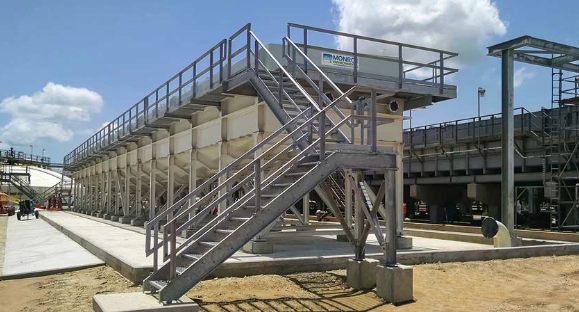E-mail seo@sino-purification.com

Time:2025-01-14 11:26:32 Reading volume:
Industrial oil-water separation typically requires specialized equipment designed to efficiently separate oil and water from a mixture. The choice of equipment depends on factors like the nature of the oil, the size of the droplets, the volume of water, and the specific industry requirements. Some of the commonly used equipment includes:

1. Centrifugal Separators
- How they work: Centrifugal force is used to separate oil from water based on their different densities.
- Applications: Often used in the food, oil and gas, and wastewater treatment industries.
- Examples: Decanter centrifuges, disc-stack centrifuges.
2. Coalescing Filters
- How they work: These filters use a special medium to coalesce (combine) small oil droplets into larger droplets, which then float to the surface where they can be separated.
- Applications: Common in industrial wastewater treatment, especially where the oil is emulsified.
- Examples: Coalescing filter systems, pleated filter cartridges.
3. Dissolved Air Flotation (DAF)
- How they work: Tiny air bubbles are introduced into the water, which attaches to the oil droplets and causes them to float to the surface for removal.
- Applications: Often used in municipal and industrial wastewater treatment.
- Examples: DAF units equipped with microbubble generators.
4. Hydrocyclones
- How they work: A cyclone separates oil from water by spinning the mixture in a conical shape, causing the heavier water to be forced outward while the lighter oil moves toward the center and can be removed.
- Applications: Common in oil and gas industries, especially for separating oil from produced water.
- Examples: Desander and degasser hydro cyclones.
5. Skimmers
- How they work: Skimmers float on the water's surface and remove free-floating oil by skimming it off the top.
- Applications: Used in oil spill recovery and industrial settings where large amounts of free oil need to be removed.
- Examples: Drum skimmers, belt skimmers, and weir skimmers.
6. Membrane Filtration (Ultrafiltration/Reverse Osmosis)
- How they work: Membranes with excellent pores are used to separate oil from water by filtering out oil droplets.
- Applications: Used for high-efficiency separation, especially when dealing with emulsified oils or very fine oil droplets.
- Examples: Ultrafiltration (UF) systems, Reverse Osmosis (RO) systems.
7. Gravity Separation Tanks (Oil-Water Separators)
- How they work: These separators take advantage of the difference in density between oil and water, allowing the oil to float to the top while the water sinks to the bottom.
- Applications: Used in wastewater treatment, especially in industrial effluents where there is a high concentration of oil.
- Examples: API separators, plate interceptors, and parallel plate separators.
8. Electrocoagulation
- How they work: An electrical current is passed through the mixture, causing oil particles to agglomerate and rise to the surface for removal.
- Applications: Often used in wastewater treatment, especially in environments with fine emulsions.
- Examples: Electrocoagulation units.
9. Flotation Systems (Enhanced)
- How they work: Similar to DAF but typically involve enhanced chemical treatment or flotation methods to help separate very small oil droplets.
- Applications: Industrial wastewater, food processing, and refineries.
- Examples: Enhanced flotation systems that combine air flotation with chemical dosing.
10. Oil Absorbent Materials
- How they work: Materials like sponges, booms, and pads are used to absorb oil from water surfaces.
- Applications: Ideal for small-scale or emergency clean-ups, but not typically used for large volumes.
- Examples: Oil absorbent pads, mats, and booms.
These systems can be used individually or in combination to achieve the required separation efficiency, depending on the specifics of the application. Each system may also require post-treatment or further purification to meet environmental discharge standards.